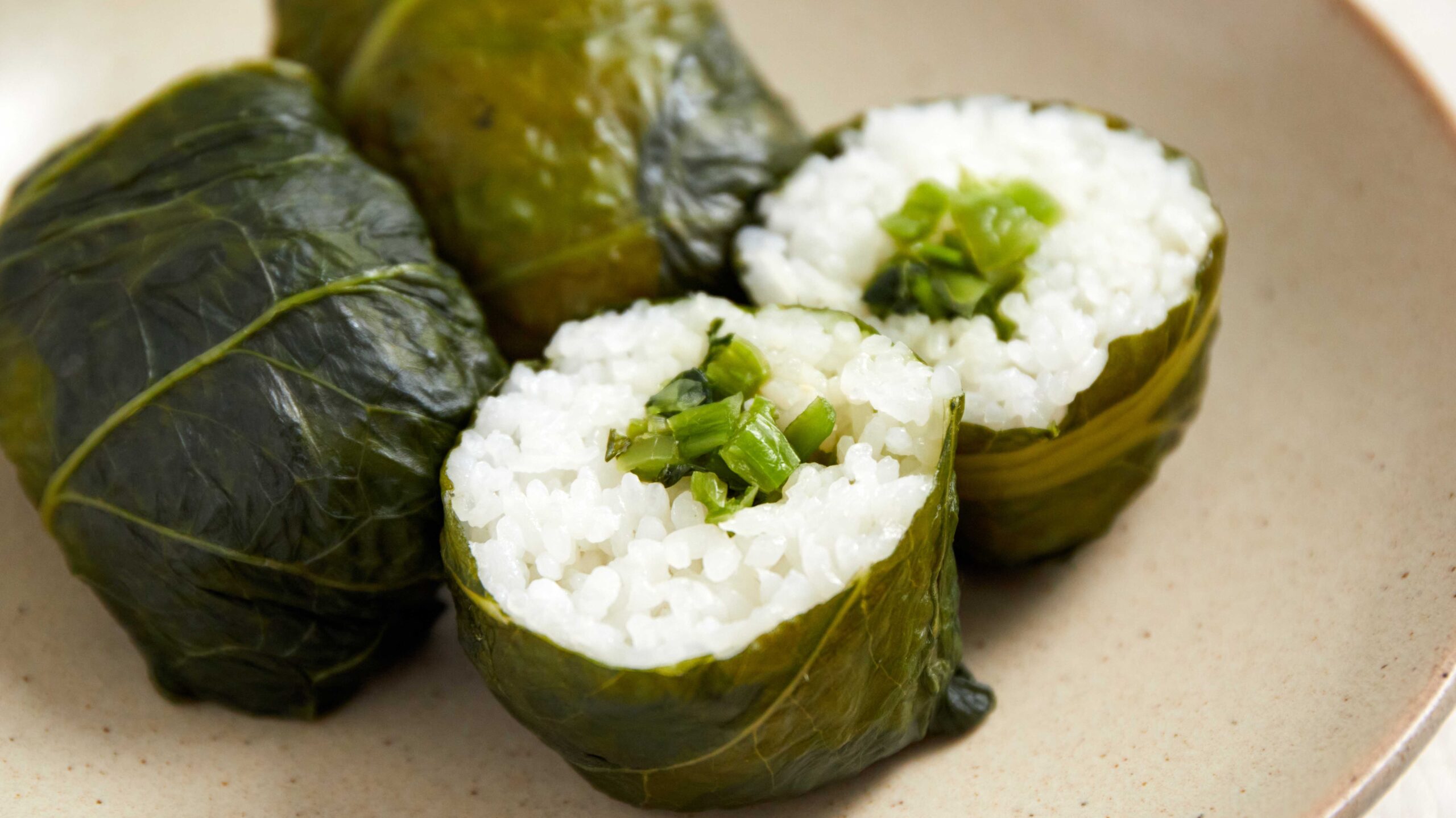
Hey there! Ever heard of a dish so good it makes your eyes pop open? Well, in the southern part of Wakayama Prefecture in Japan, there’s this awesome local food called “Mehari-zushi” that might just do the trick. It’s basically a big ol’ rice ball hugged by a salty, pickled mustard green leaf. Sounds simple, right? But trust me, it’s got a cool history and some interesting stories behind it. Let’s take a closer peek!
Dish Name: Mehari-zushi
- Region / Location: Wakayama Prefecture
- Primary Area of Tradition: Southern region
- Main Ingredients: Rice, pickled takana (leaf mustard)
How It’s Eaten / Served
Mehari-zushi is a type of large rice ball wrapped in pickled takana leaves. You pretty much grab it and take a big bite! The size can be quite substantial, sometimes requiring you to open your mouth wide – which is one of the theories behind its name. The rice inside can be plain white rice or seasoned sushi rice, depending on preference. Back in the day when rice was scarcer, they often mixed it with barley. Sometimes, people even add fillings like grilled fish seasoned with soy sauce. In the Shimosato area of Nachikatsuura Town, they used to mix sweet and savory cooked whitebait (small fish from the river) into the rice before wrapping it in takana.
Cultural Background and Preservation
Born in the southern areas of Wakayama, where fishing and forestry thrived, mehari-zushi became a convenient and quick meal for folks working long hours. The name “mehari-zushi” has a few interesting possible origins. Some say it’s because you have to open your eyes wide when you take a big bite (“me o haru” means to open your eyes wide). Others suggest it’s so delicious it makes your eyes pop (“me o miharu” means to open your eyes in surprise at something amazing). There’s even a theory that it comes from the way the takana leaves completely wrap and “seal” (“mebari suru”) the rice ball.
Takana is harvested from winter to early spring. It grows well even in less sunny spots, making it a popular crop in the mountainous southern region of Wakayama, where flat land is limited. Shingu City is known for its large and tender takana leaves. Besides pickling it at home, people use takana in stir-fries and simmered dishes. The finely chopped core of pickled takana is also a tasty topping for “chagayu” (rice porridge).
Traditionally, takana is salted in barrels around January or February and can last until autumn, even as it changes color. To make mehari-zushi, this pickled takana is often briefly soaked in vinegar before being used to wrap the round rice balls. These days, smaller, easier-to-eat versions are more common. The fillings have also become more diverse, including seasoned and chopped takana stems, bonito flakes, pickled plums (umeboshi), and whitebait. While it has evolved with the times, mehari-zushi continues to be enjoyed by people of all ages. Some mehari-zushi products are even recognized as high-quality Wakayama Prefecture specialties under the “Premier Wakayama” brand.
Additional information:
- Takana: A type of Japanese leaf mustard with a slightly pungent and salty flavor when pickled.
- Sushi rice: Cooked white rice that is seasoned with vinegar, sugar, and salt.
- Whitebait: Very small, young fish. In this case, likely a freshwater variety.
- Bonito flakes: Thin shavings of dried and smoked bonito (a type of tuna), used as a flavorful topping in Japanese cuisine.
- Pickled plum (Umeboshi): Salt-pickled Japanese plums with a very sour and salty taste.
- “Premier Wakayama”: A certification system in Wakayama Prefecture that recognizes and promotes high-quality local products.
The information about regional cuisine featured on this website (Piggy's Grandma of Japan) is summarized and adapted from the Ministry of Agriculture, Forestry and Fisheries of Japan (MAFF) website, "Our Regional Cuisines"Additional commentary is provided based on the unique experiences and perspectives of the site's editors.
The copyright for the original content regarding regional cuisine belongs to the Ministry of Agriculture, Forestry and Fisheries of Japan.
The summaries and adaptations published on this site are intended for informational purposes only. Piggy's Grandma of Japan does not guarantee the accuracy or completeness of this information. For the most accurate and complete details, please refer to the original pages on the MAFF website.

